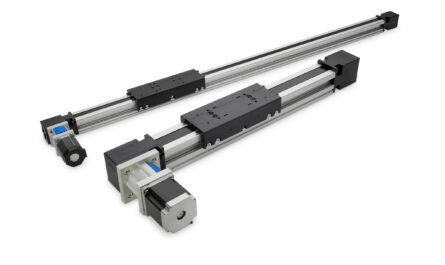Cyclocomputers are one of the most important pieces of technology for cyclists. Over the past few decades, cyclocomputers have evolved significantly from basic devices that display only speed and distance to advanced units that provide a wealth of riding data and connectivity features.
Types of Cyclocomputers
There are different types of cyclocomputers classified based on their features and functionality:
Basic cyclocomputers
Basic units typically display only speed, distance traveled and trip time. These entry-level models are very affordable but provide limited data. They are powered by basic sensors and buttons to cycle through displayed information.
Standard cyclocomputers
Standard models of Cyclocomputer provide additional data like average speed, max speed, total time etc. along with the basic metrics. They are powered by wheel sensor magnets and have additional buttons to navigate menus. Features like odometer, trip distance are common.
Multifunction cyclocomputers
Multifunction units of Cyclocomputer take data tracking to the next level. They track criticial metrics like heart rate, cadence, power readings along with location details. Advanced models have connectivity to sync data with apps for in-depth analysis. Touchscreens, USB updates are some features of these high-end devices.
Functions of a Cyclocomputer
Regardless of the type or price point, all modern cyclocomputers perform the following basic functions:
Speed display: Current speed and max speed achieved are the most fundamental metrics. Accuracy depends on sensor quality.
Distance tracking: Total distance, trip distance and odometer are tracked internally or via sensors. Important for route planning.
Trip modes: Allow resetting values for multiple rides or journey segments without losing total data. Commute, leisure etc.
Clock functions: Time, date etc for synchronization with other devices or uploading to platforms.
Advanced cyclocomputers incorporate additional useful functions:
Location tools: GPS enabled models map routes and track location. Useful for navigation, sharing rides online.
Biometric integration: Read heart rate monitors, power meters for fitness and training data.
Connectivity: Bluetooth and ANT+ allow syncing workout statistics to smartphones, computers for deeper analysis.
Customization: Programmable data fields, metrics, display screens based on rider preference. Touch enabled models for easy use.
Evolution of Cyclocomputer Technology
Early cyclocomputers from the 1980s were basic devices that simply displayed speed and distance using magnet wheel sensors. Over time, advances in microelectronics allowed the addition of more data:
1990s: Trip time, max speed, odometers became common. Basic clocks added.
2000s: Multifunction computers emerged with additional metrics like average speed. Basic connectivity debuted.
2010s: Sophisticated models provide detailed training data. GPS navigation & biometric integration introduced. Apps and advanced customization standard.
2020s: Artificial intelligence, AR/VR integration being explored. Cloud sync, predictive analytics on the horizon.
Integration of new technologies continually enhanced the functionality, durability and usability of modern cyclocomputers. Lighter sensors, waterproof casings, longer battery lives are other developments over the decades. Touchscreens now deliver an interface comparable to smartphones for intuitive usage on the go.
Popularity and Usage
Cyclocomputers have become an essential part of many cycling setups due to the wealth of valuable data they provide. Key user groups include:
Casual/recreational cyclists: Monitor progress, track routes without smartphone distractions. Motivate to achieve targets.
Commuters: Easily track mileage reimbursements, plan routes. Safety features useful in traffic.
Racing cyclists: Critical training metrics for optimal performance. Sync to coaching platforms.
Touring cyclists: Reliable navigation over long distances, camp comparisons between routes.
Kids/families: Fun data without smartphones, set achievable goals to develop active lifestyles.
Fitness enthusiasts: Integrate with heart rate monitors for effective workouts, cardio progress.
Manufacturers continue expanding cyclocomputer lines to suit every type and budget of cyclist. Commonly seen brands include Garmin, Wahoo, Bryton and CatEye. As battery life increases, sensors shrink and prices decline, the future remains bright for these essential cycling gadgets.
Connectivity and Data Analysis
uploading ride statistics make modern cyclocomputers even more valuable training tools:
Syncing to apps: Pair units to platforms like Strava, TrainingPeaks, etc. to log miles, share routes.
Computer software: Transfer data via USB for deeper analysis, graphs of progress over time.
Cloud storage: Auto-upload removes manual syncing hassles. Access stats anywhere via web.
Performance tracking: Core metrics stored longterm showcase improvements year over year.
Social motivation: Leaderboards, kudos encourage pushing personal limits with online community support.
Group rides: Coordinate with clubs, tag along routes, compare splits without needing same device.
Professional tools: Elite and developing athletes use platforms like Zwift, Sufferfest for structured virtual/indoor training.
Bike shops and coaches: Diagnose issues, plan programs leveraging rich client statistics in one place.
Manufacturers continually add more powerful syncing options between computers and online/mobile platforms. Seamless connectivity maximizes the insight gleaned from ride tracking investments.
Future of Cyclocomputer Technology
The cyclocomputer industry continues innovating to satisfy evolving rider needs:
Advanced sensors: Smaller, multi-constellation GNSS chips. Integrated power/cadence/speed readings without additional gear.
Displays: Larger, higher resolution touchscreens for better outdoor visibility. Folding models simplify storage.
Materials: More durable casings, improved waterproofing even in harshest conditions. Lightweight carbon fiber variants.
Processor upgrades: Quicker response times, multitasking capabilities on par with smartphones.
Augmented reality: Route navigation overlays directly onto real-world views for hands-free use.
Health integrations: Links to glucose monitors, oxygen sensors enrich fitness/medical applications.
Voice control: Hands-free cycling computer operation via advanced voice assistant technologies.
Predictive capabilities: Route planning aids, performance based on AI/machine learning analysis of big data.
Automatic safety: Potential for automated emergency alerts, crash detection with integration into eCall emergency response systems.
Wireless charging: Solar panels or induction pads eliminate cable hassles.
*Note:
1. Source: Coherent Market Insights, Public sources, Desk research
2. We have leveraged AI tools to mine information and compile it




